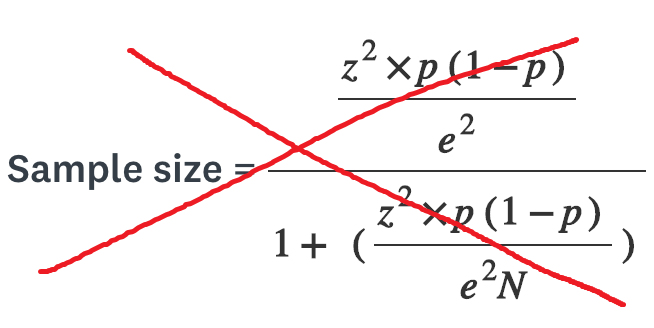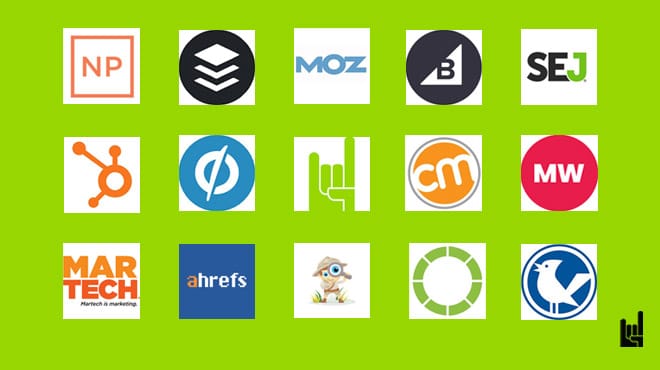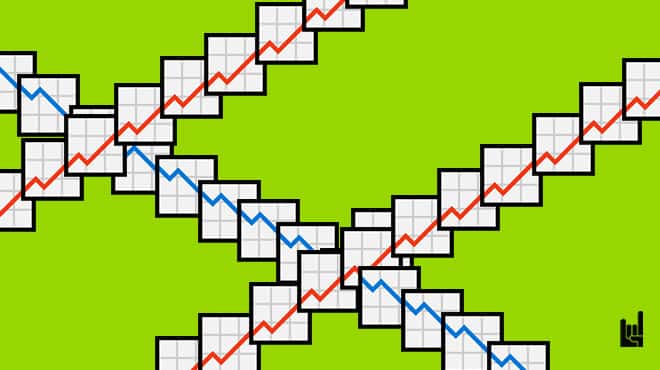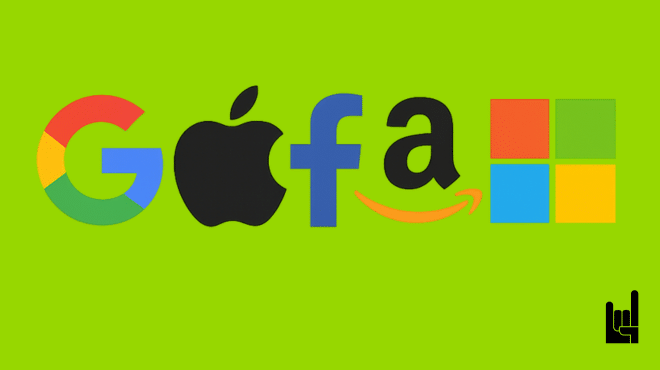Accordingly, landing page optimization is about increasing the conversion of the page. Although there are many ways to optimize a landing page, what marketers overlook is when you shouldn’t optimize a landing page.
So, let’s examine the 3 most common such scenarios.
Reason #1: Not Enough Traffic on the Page
The right decisions need the right data. And the right data needs the right volume. Without the right traffic, you can’t draw safe conclusions and therefore you can’t make any rational decisions – let alone optimizations.
For example, let’s say that your landing page has a CTA button at the bottom of the page. And that you are running an A/B test between CTA button 1 and CTA button 2. So, you run the test for a couple of weeks and then you get the results. The results can look something like this:
CTA button 1: 8 clicks
CTA button 2: 12 clicks
Does this mean that CTA button 2 is converting better than CTA button 1? Not really. Maybe can’t put your finger on it but you know that you would never make that assumption. Simply because the numbers are too small. Or, as they say in Statistics, because there is no statistical significance.
A statistically significant result means that the result is legitimate and not due to chance or coincidence. Statistical significance is represented with the p value. In most studies, a p value of 0.05 or less is considered statistically significant.
💡 A/B testing calculator for statistical significance
To be able to achieve statistical significance, you need the appropriate sample size. This is what’s called statistical power. The sample size influences the statistical significance. And the smaller the difference between group A and group B, the larger of a sample you will need to find a significant difference.
You can get educated about the relationship between significance, power, sample size, and effect size here but the bottom line remains the same: you need numbers.
So the question becomes this: What’s the appropriate sample size before you get to optimize your landing page? How much traffic do you need? How much is good enough?
To achieve the desired confidence level in statistics, you need to take into account factors such as population size and margin error.

However, you don’t read this article tog get inspired for your statistics major; you just want to do your work.
So you can forget all this and just try to get a sample size of 100. That’s it. If you want to get any kind of meaningful result for your landing page, you will need at least 100 users in traffic. Here are a few ways/ channels through which you can find your first 100 users:
- Organic traffic through SEO
- Paid search ads
- Paid social ads
- Retargeting ads
- Relevant communities
- Email list
- Twitter threads
Reason #2: Not Tracking Correctly
If you aren’t tracking your landing page, there’s no effective way to know what’s working and what doesn’t. When you don’t have the proper tracking in place to have confidence in the numbers you are seeing, you won’t be able to know if you are fixing or breaking anything. What’s more, if you make changes, you won’t be able to assess the outcome.
Without correctly tracking your landing page you can’t:
- Use your budget effectively
- Improve your ROI
- Understand the effectiveness of your content
- Make the right decisions
Tracking correctly your landing page means doing two things correctly at the same time. First, you need to track the right metrics. Second, you need to know how to read and interpret the results of these metrics correctly.
Let’s examine both.
The 4 essential landing page metrics you need to track
There are more than a few metrics you should be tracking, depending on the kind of landing page you’ve created and what you are trying to accomplish. Regardless, every landing page, no matter its purpose, should track those 4 essential metrics.
1. Page views
Landing page views show how many times users have visited your landing page. Every pageview is a potential customer. Having a sense of how many users end up on your landing page is vital information because a) you can see which landing pages get more traffic and b) how the landing page performs in time and whether it’s affected by seasonality.
2. User by source
You need not only to know how many visitors land on our page but also where those users come from. It’s possible that you bring traffic to your landing page from multiple channels. For example, you may be sharing the page with your email list, and running LinkedIn ads and Google ads, all at the same time. You are supposed to find which channel performs the best and see if it’s worth it investing in it next time.
3. Conversion rate
The ultimate landing page metric. Conversion rate calculates the number of users that complete the desirable action the landing page was built for. More often than not, this action is taken when the user clicks on the call to action (CTA) button. Some landing pages are created in order to make the user Purchase something while others are created to make them Subscribe to something else.
4. Conversion cost
Congratulations! You made a conversion. But maybe it’s too early for celebrations. No matter how good converting users feels, it should be done so profitably. What’s the point of having a $20 cost for conversion when you are selling $18 eBooks? To calculate the conversion cost, you can use this formula: Total marketing spend / Total number of conversions. Keep in mind that total marketing spend includes the ad spend + third-party expenses, such as tools.
Interpreting the result correctly
Now that you know what are the essential metrics you need to track for your landing pages, you also need to how to interpret those correctly. No amount of data is useful if it can’t be read as should.
For example, let’s assume we had a landing page running for a couple of weeks. And we now decided that we want to see some of these metrics. More specifically, the total number of conversions.
Sign-up button: 5,000 clicks
Learn More button: 3,000 clicks
At first glance, it may look like the Sign-up button brings more leads. However, upon further inspection, we may actually realize that of the 5,000 who clicked on the Sign-up button, 3,000 of them dropped off. On the other hand, of the 3,000 clicks from the Learn More button, only 500 of them left. Thus, we understand that the Lean More button works better for conversion. Possibly because the content written there connected with the user successfully and, in the end, managed to convert them.
Of course, to be able to get these kinds of results, you also need to have the right kind of tracking in place.
Reason #3: Not Calculating the Time for Optimization Correctly
Lastly, you shouldn’t optimize your landing page if you can’t dedicate the appropriate time and energy to this particular task.
If you haven’t made any kind of optimization on a landing page in the past, there’s a cold truth you need to know: optimization takes time. And, more often than not, it takes more time than you had initially planned. To make matters worse, if you don’t have much experience with landing page optimization, then it’s natural that it will take you more time anyway.
A landing page is made of many elements, such as:
- Headline and sub-headline
- Copy
- Images
- CTA buttons
- Forms
Indeed, you may not need to spend a whole afternoon experimenting with the headline, but this is not the case for changing and testing an automation in your landing page.
Optimizing different elements of a landing page also means using different members of your team, depending on the kind of optimization. Accordingly, if you need to optimize the copy, you will use your copy/ content writer. If you decide to optimize one or more of your images, it’s your designer’s time you are going to ask for. And if many users abandon one of your forms, it’s the marketer the one who will have to invest their time, see what’s wrong, and try to fix it.
Therefore, you first need to set your priorities with your team and then see if it’s the right time for a landing page optimization. Otherwise, you can end up spending valuable time on a low-priority task or try to complete the task as fast as possible, and thus not productively.

I write for GrowthRocks, one of the top growth hacking agencies. For some mysterious reason, I write on the internet yet I’m not a vegan, I don’t do yoga and I don’t drink smoothies.



